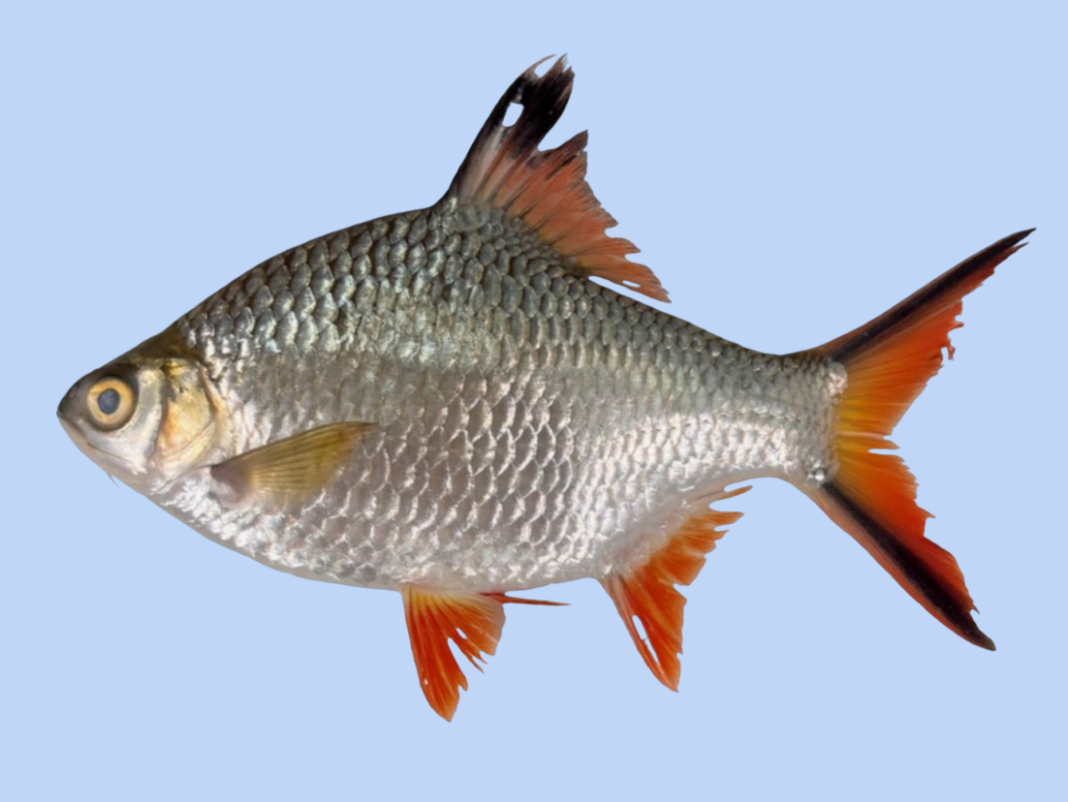A striking, silver-colored fish commonly kept as an aquarium pet has been hiding in plain sight in the Philippines’ largest freshwater lake, renewing concerns over the unmonitored and unmitigated release of alien species into the country’s already strained ecosystems.
Ateneo de Manila University researchers recently undertook a careful morphological analysis of a fish caught in Laguna de Bay back in 2024 and positively identified it as Barbonymus schwanefeldii (commonly known as “tinfoil barb” in the pet trade). Native to many parts of Southeast Asia outside the Philippines, it is a fast-growing omnivorous species whose eye-catching metallic appearance makes it a popular ornamental fish. However, once released into the wild, it can rapidly outcompete native fish for food and breeding grounds.
Previous reports of the species in the Philippines were either unverified or based only on anecdotal sightings. And while it cannot be ascertained when and how tinfoil barbs were introduced to Laguna de Bay, the confirmation of their presence in the area highlights the largely unmonitored trend of invasive freshwater fishes establishing themselves in Philippine inland waters, with potential long-term ecological consequences.
Ateneo de Manila University biologists Kent Elson S. Sorgon, Marjorie Juliana L. Martinez, Andrei Justin F. So, Mariko Franccesca R. Aboganda, Jazreen Nicole G. Parungo, Aeris Johanne G. Poricallan, Keona Tiffany B. Prieto, Mellissa Jewel S. Magday, Alexa Charlize D.C. Geronimo, Ma. Vianca Julia E. Anupol, and Derreck O. De Leon posted these findings in the Philippine Journal of Systematic Biology.
“Although ours was the first confirmed sighting of B. schwanefeldii in Laguna de Bay, sightings have also been reported in nearby rivers such as in Pagsanjan, Laguna, and elsewhere. We hope that local authorities can help raise awareness and put in further monitoring efforts, not just for this but for other invasive species as well,” said lead researcher Kent Elson S. Sorgon.
The authors warn that the establishment of B. schwanefeldii could further stress the already degraded ecosystem of Laguna de Bay, which supports millions of Filipinos through fisheries, water supply, and flood regulation. If this spread continues unchecked, it could mirror the ecological disruptions caused by other invasive fish worldwide—such as tilapia or janitor fish—leading to biodiversity loss and irreversible changes to aquatic food webs. Their study underscores the urgent need for comprehensive biosecurity policies and a national inventory of freshwater alien species before more irreversible introductions occur.
Reference:
Sorgon, J. C., et al. (2025). New records of the tinfoil barb Barbonymus schwanefeldii (Bleeker 1853) in Laguna de Bay, Luzon Island, Philippines. Philippine Journal of Systematic Biology, 18(1). https://archium.ateneo.edu/biology-faculty-pubs/186/
For further inquiries, please contact the paper’s lead researcher, Kent Elson S. Sorgon, at ksorgon@ateneo.edu
For other inquiries, please email media.research@ateneo.edu. Visit archium.ateneo.edu for more information about our latest research and innovations.


